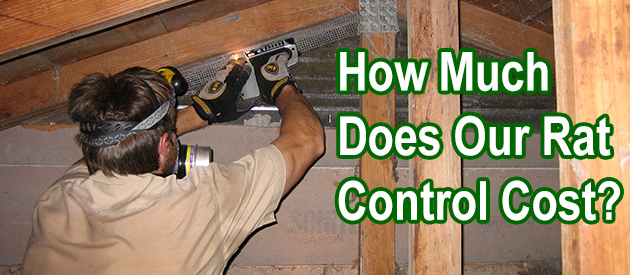Arlington County, Arlington Rat Control Situation:
Hello. I don't know if this is something you still do, but I need some expert advise so thought I'd give it a try! We are renting a house in Alexandria VA west of DC. I think it was built in the 60's, a ranch style home, and has been renovated but has much of the original doors, framework, etc. The guest bathroom in particular is not sealed off properly. It was an add-on and not done correctly, so the slab is cracked and eroding, as well as rotten wood with holes in it sealed with foam of all things! We have a beautiful courtyard and put out a couple bird feeders, but recently took them down when we noticed the sounds of critters in the attic. We've looked up there and so far the insulation looks almost new and other than a few cobwebs it's pretty clean up there. But there are a few droppings! I want to catch this early and eradicate the problem as quickly and humanely as possible for our safety and for the safety of our landlords house. It looks like you suggest sealing first, then traps, then clean-up. What do you think about the birdseed? Is it to blame? Or the wide open house? Can the rats be coming in from below the slab? My husband, ( this is his email btw) has heard them under the tub in the guest bathroom:// Any other tips? And are you by chance nearby in Arlington VA? Probably not, but just thought I'd check! Any and all suggestions are appreciated. Thank you for your time!
My response: The slab could be to blame. Perhaps there are multiple entries. I wouldn't know without seeing it, but I live in Orlando. Bird seed does attract rats, but really, the problem is that there are openings leading inside the house.
We have a roof rat problem. We've heard the little critter crawling around in our daughters upstairs bedroom (refinished attic /bedroom) for awhile now. My wife also saw the little guy in action on our neighbors bird feeder at about 3:30am this morning and then watched him head back up to our roof. That pretty much sealed the deal that we weren't dealing with squirrels... I can see a few potential issues. We don't have a way into the attic because of the way it was refinished. When previous owner did renovations, they didn't leave access point to portion of attic that is unfinished. There is also some flashing on roof that is pulled up and near where we hear the most noises. I was going to secure it, but don't want to trap anything in... Contact info is below. Give me a call on my cell, anytime, and I can go into more detail for you. Hopefully you can give me a rough estimate on the phone and then we can proceed from there. Definitely want to get this issue resolved. :)
Arlington Rat Control Tip of The Week
Is It Common For Rats To Bite Humans While They're Sleeping?
There have been many cases reported in which human beings have been bitten by rodents. People tend to be alarmed when seeing a rat, not just for being repulsive but for the notoriety they have. However, some rumors are just myths that are a bit exaggerated.
Any animal tends to behave aggressively if they feel threatened or in a dangerous situation. In the case of rodents, the behavior is the same. Most of the times they want to go unnoticed, but if they feel cornered they can bite in defense to escape.
Can Rats Bite People While They're Asleep?
It is a rare thing that a rat climbs to someone's bed and bites them. Generally, the occasions in which a rodent climbs a piece of furniture has to do with dirtiness. A messy bed with crumbs of food will attract a rodent.
In these situations, the animal does not normally attack the person. However, some rats sometimes bite kids when they sleep. These exceptions happen because these kids are in low hygiene conditions with crumbs of food on their hands and the smell of this food is an open invitation for rats and their instinct for feeding.
Rats And Infections
People that have been bitten by a rat usually say it is a very strong pain. It is known that their teeth can deeply penetrate the skin, whereby it is necessary to act and clean the wound quickly to prevent the spread of diseases that can be caused when their saliva enters in contact with the bloodstream.
Rodents are vectors in the transmission of many diseases due to the bacteria and viruses they carry. A messy and dirty house is sought after by rodents, due to the abundance of areas suitable for nests. For this reason, if you wish to prevent a rodent infestation, you should keep your house clean.


